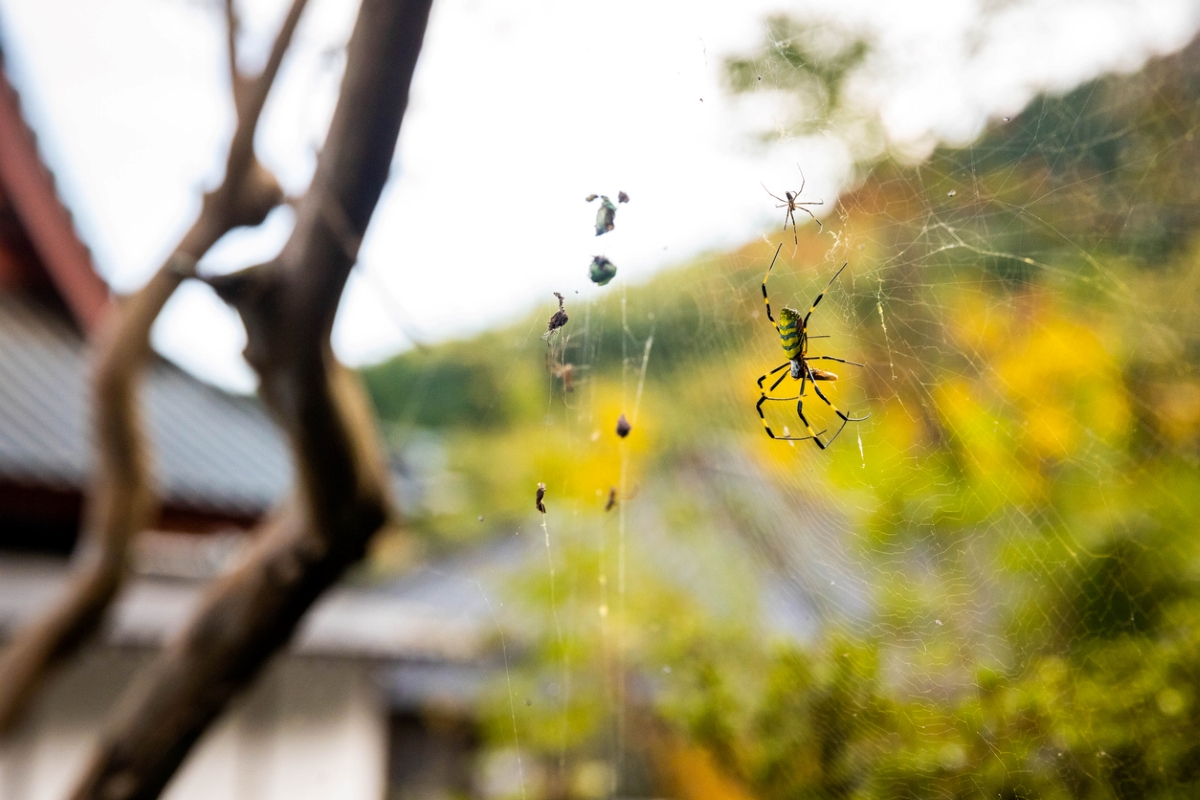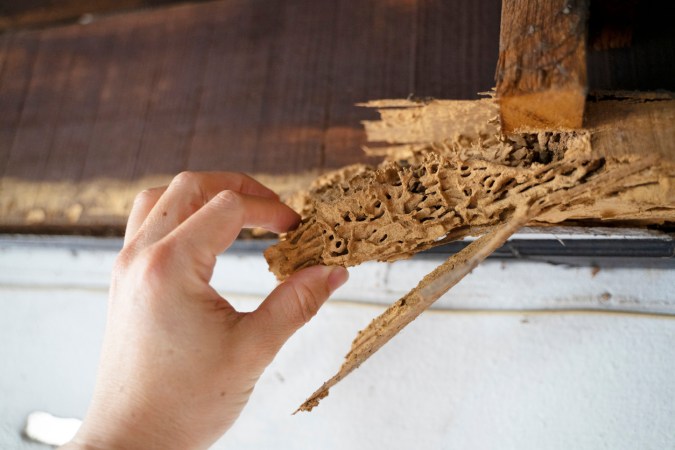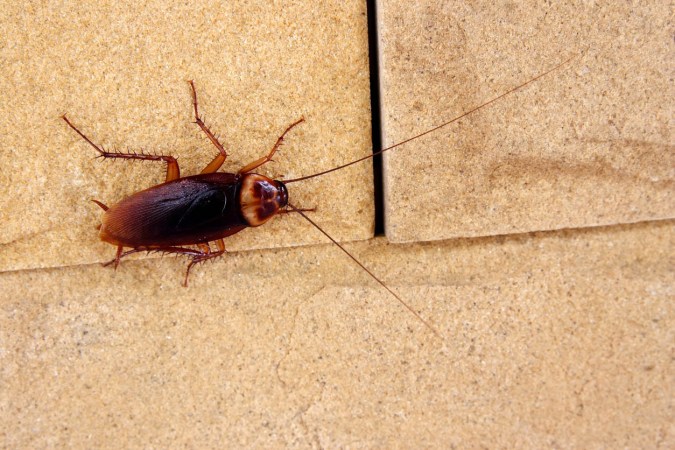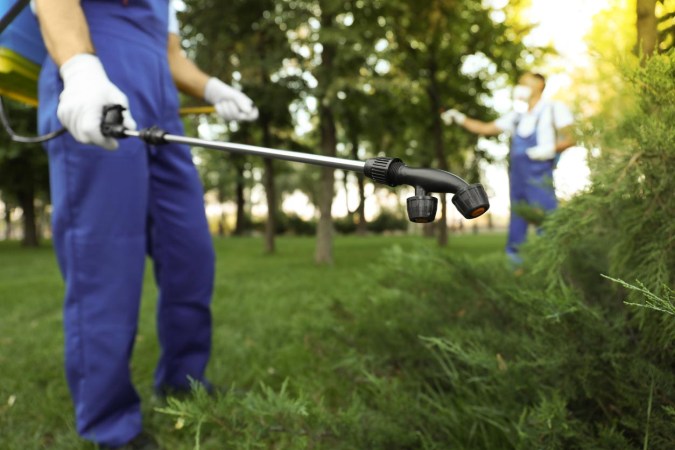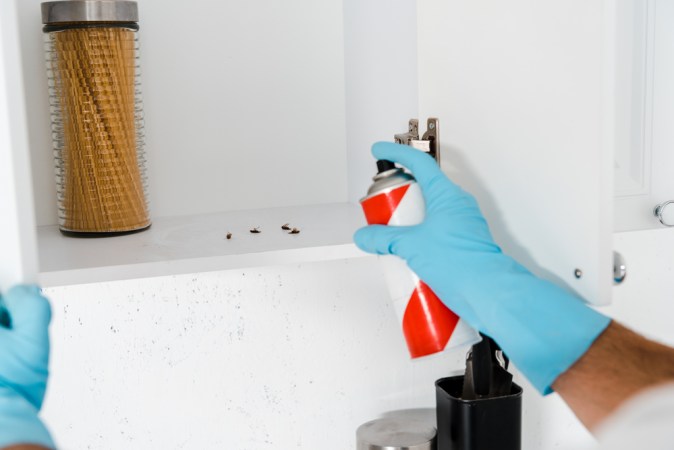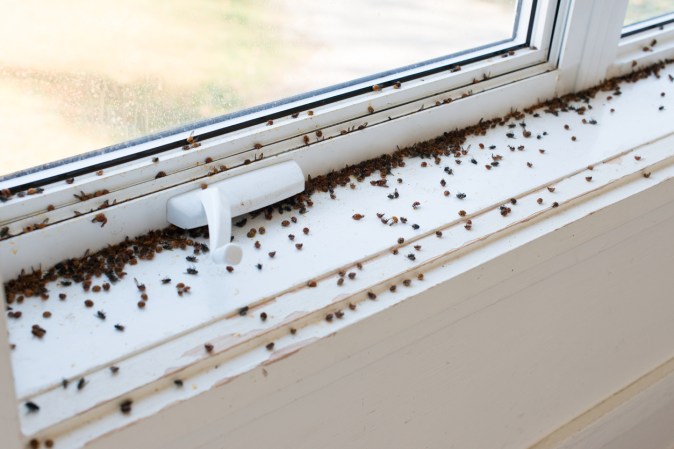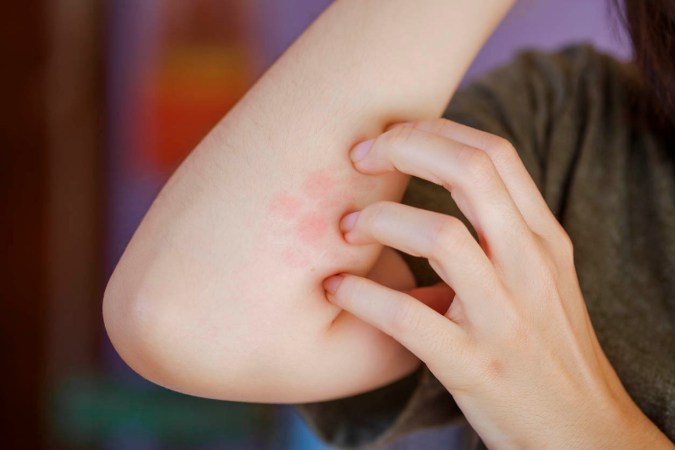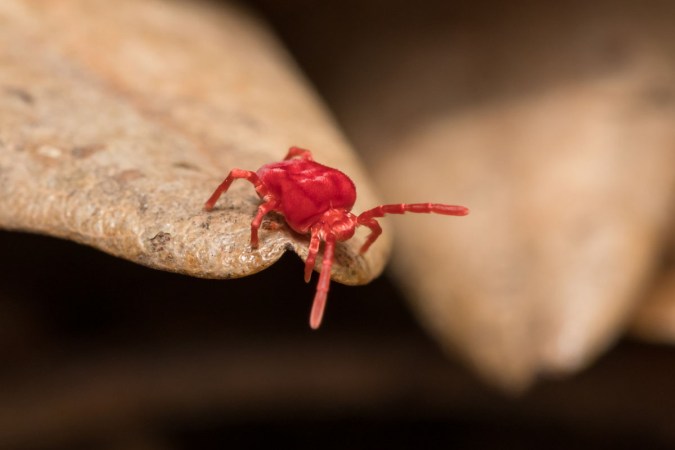We may earn revenue from the products available on this page and participate in affiliate programs. Learn More ›
Insects typically aren’t out to get you. Most bugs are simply looking for shelter from the cold, a source of food and water, and a warm, dark place to spend the winter. And while scientists are still studying the effects of climate change on global insect populations and behaviors, we do know bugs are quite sensitive to temperature changes.
Is this why we’re seeing more bugs in our homes these days? It’s hard to say. But whatever bugs are going through, we still don’t want them sharing a kitchen or bedroom with us. Most pest-control experts will tell you that keeping insects out of your home in the first place is more than half the battle. To do this, you need to make a single-minded effort to seal all gaps and cracks in your home’s exterior and interior. It’s also important to eliminate excess moisture, especially in basements, attics, bathrooms, and kitchens, and to remove potential food sources by sealing garbage and storing food in airtight containers. While these time-tested methods will help reduce indoor insect populations, there are more measures you can take to keep your home free of these autumn invaders.
1. Centipedes
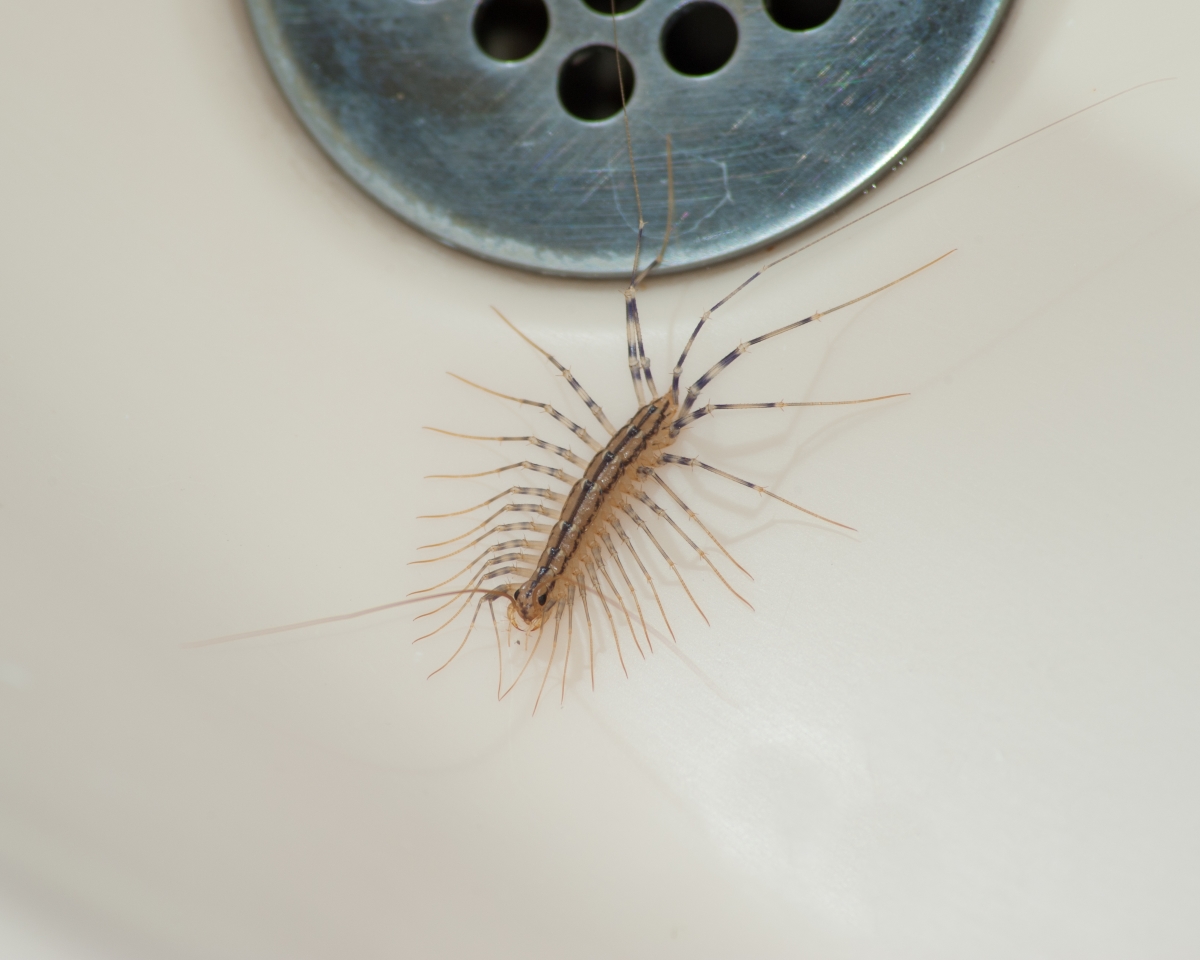
Given their creepy-crawly appearance, centipedes (Scutigera coleoptrata), are high on most people’s list of unwanted critters in the home. But you may be surprised to learn that these multi-legged insects aren’t necessarily bad to have around. They hunt other insects and spiders that, like them, head indoors in search of food and water, and warm, damp places to spend the winter.
Solution: To keep centipedes outside, it’s essential to seal your home properly and prevent any moisture buildup. Beyond that, seek expert pest control if you notice an abundance of centipedes in closets, bathrooms, basements, or other areas.
RELATED: Solved! Should You Really Get Rid of House Centipedes?
2. Silverfish
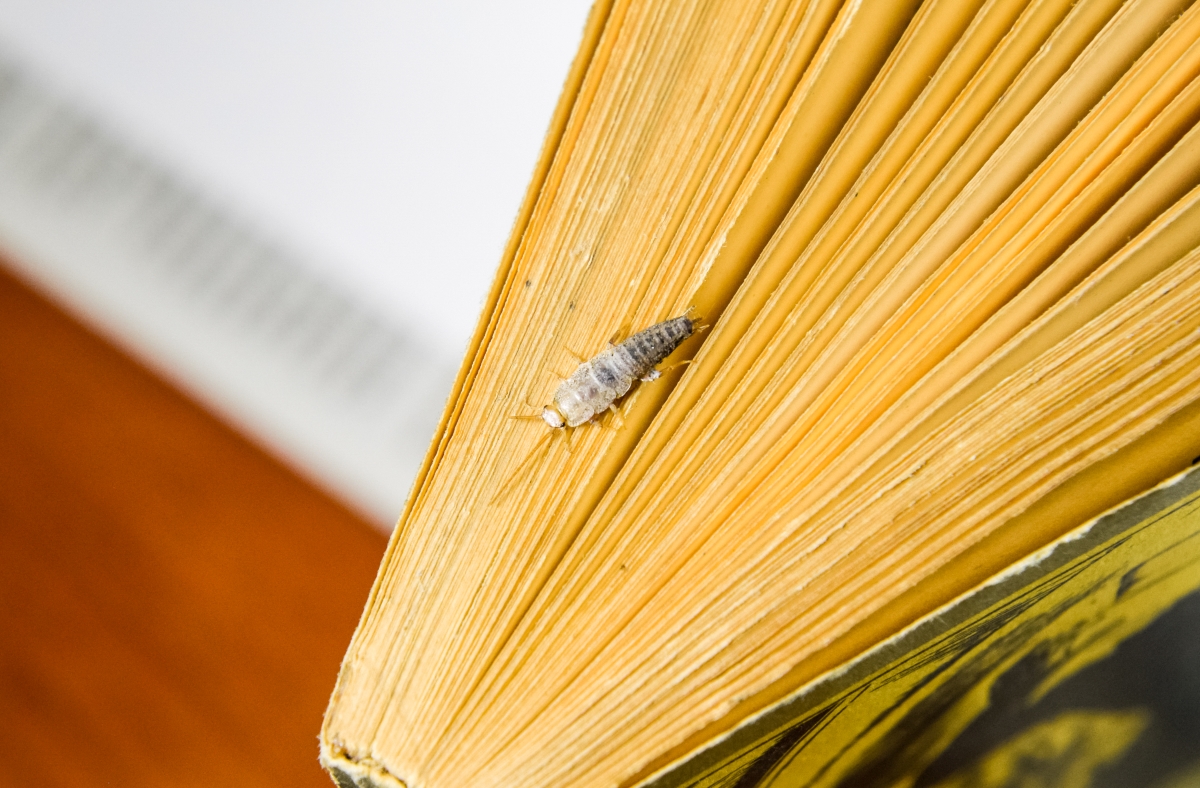
If you’ve ever opened a sweater box and noticed tiny holes in your clothing, you may have silverfish (Lepisma saccharina). These small, wingless silver bugs feed off carbohydrates, simple sugars found in natural fibers like cotton, silk, and wood. They are also attracted to moisture, which is why you may see them in your tub or sink.
Solution: Consider using boric acid bait packs in areas where you see an abundance of silverfish, such as storage boxes, kitchen cabinets, bathrooms, and basements. You can also use silverfish glue traps or diatomaceous earth.
3. Crickets
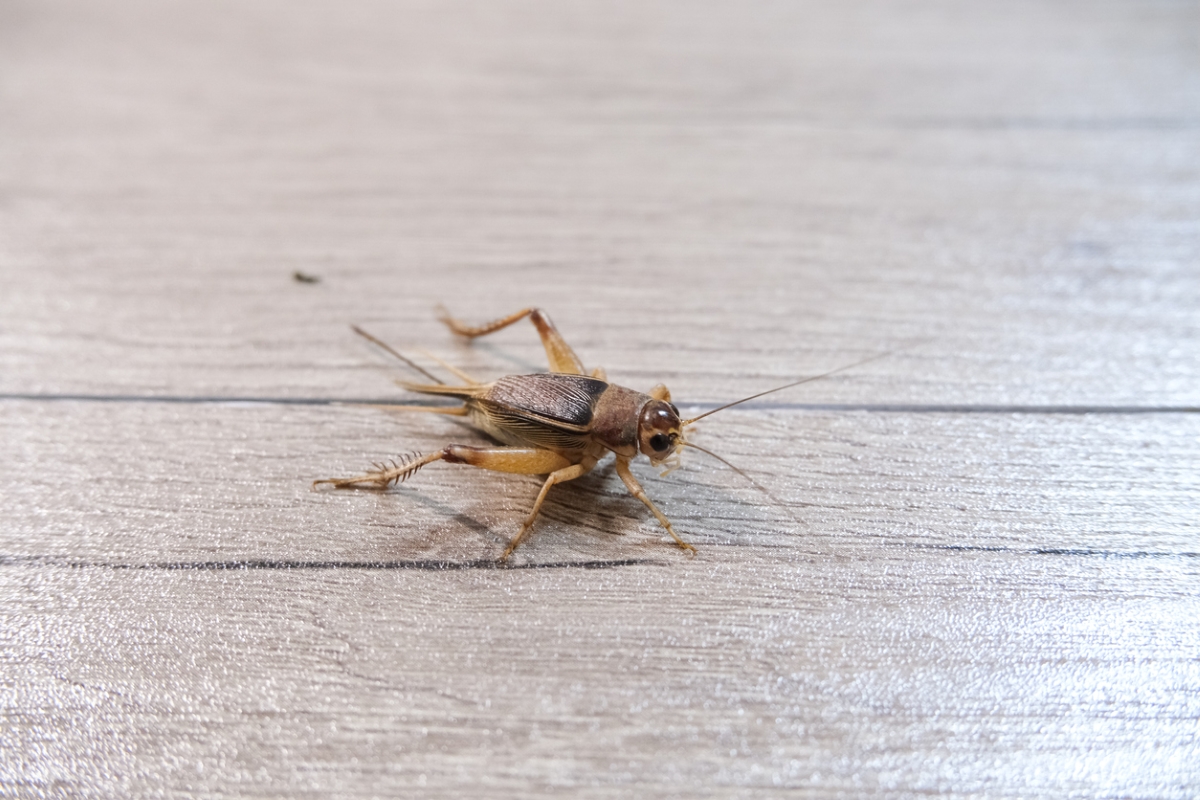
The pleasant chirping of crickets (Acheta domesticus) is a sure sign that fall is on its way, but crickets inside the home quickly lose their charm. They not only disturb our sleep, but they also eat our clothing and breed rapidly. Species like greenhouse camel crickets look for warm, dark, moist spaces to multiply and can quickly take over basements and ground floors.
Solution: Seal entry points, especially under the front, back, and garage doors, where they can easily hop in. If the pesky critters still make their way inside despite your best efforts to seal them out, set nontoxic traps to catch crickets that have already penetrated your home’s defenses.
RELATED: 15 Natural Pest-Control Strategies for Your Home Landscape
4. Spiders
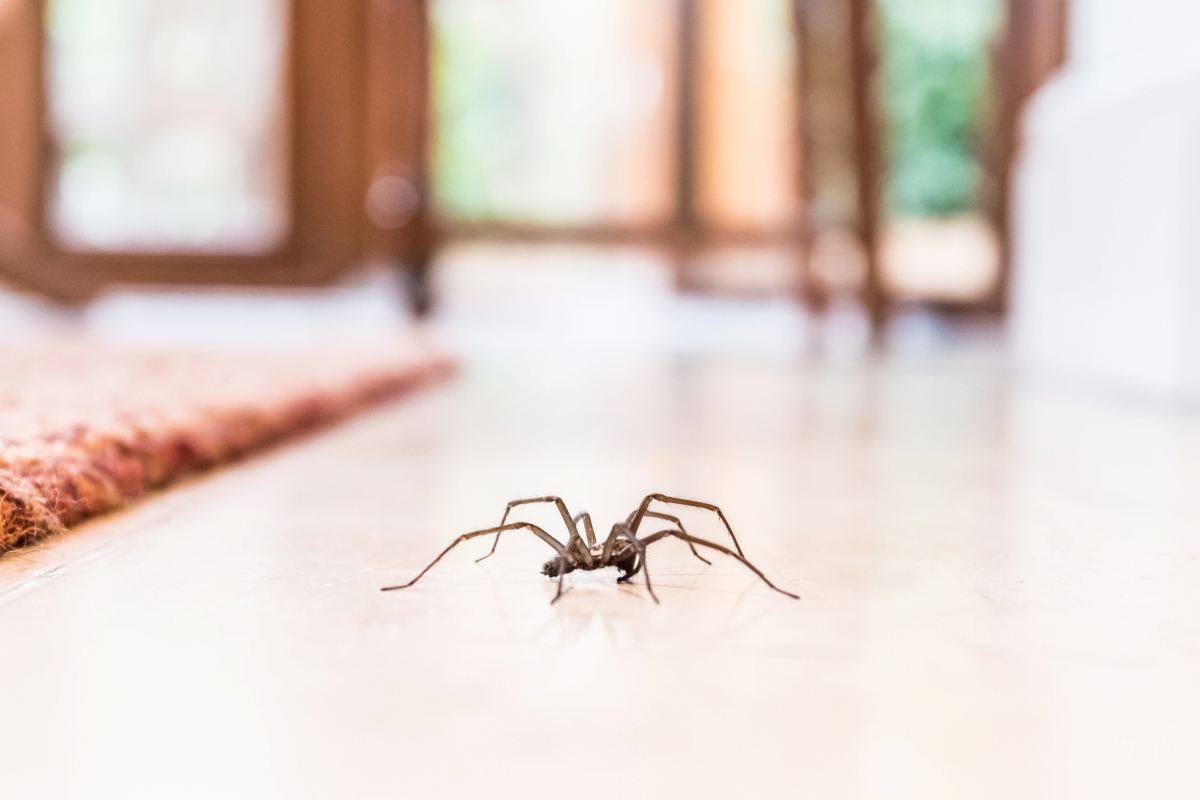
Outside of entomologists and insect-obsessed kids, few people welcome the sight of the common house spider (Achaearanea tepidariorum) inside the home. Yearlong inhabitants of many homes, spiders of all varieties get a little stir-crazy come fall—their mating season—and literally come out of the woodwork in search of a mate.
Solution: Discourage spiders from settling in your house by removing webs promptly, and turn off exterior lights at night. Lights attract insects, which in turn attract spiders searching for food.
5. Bedbugs
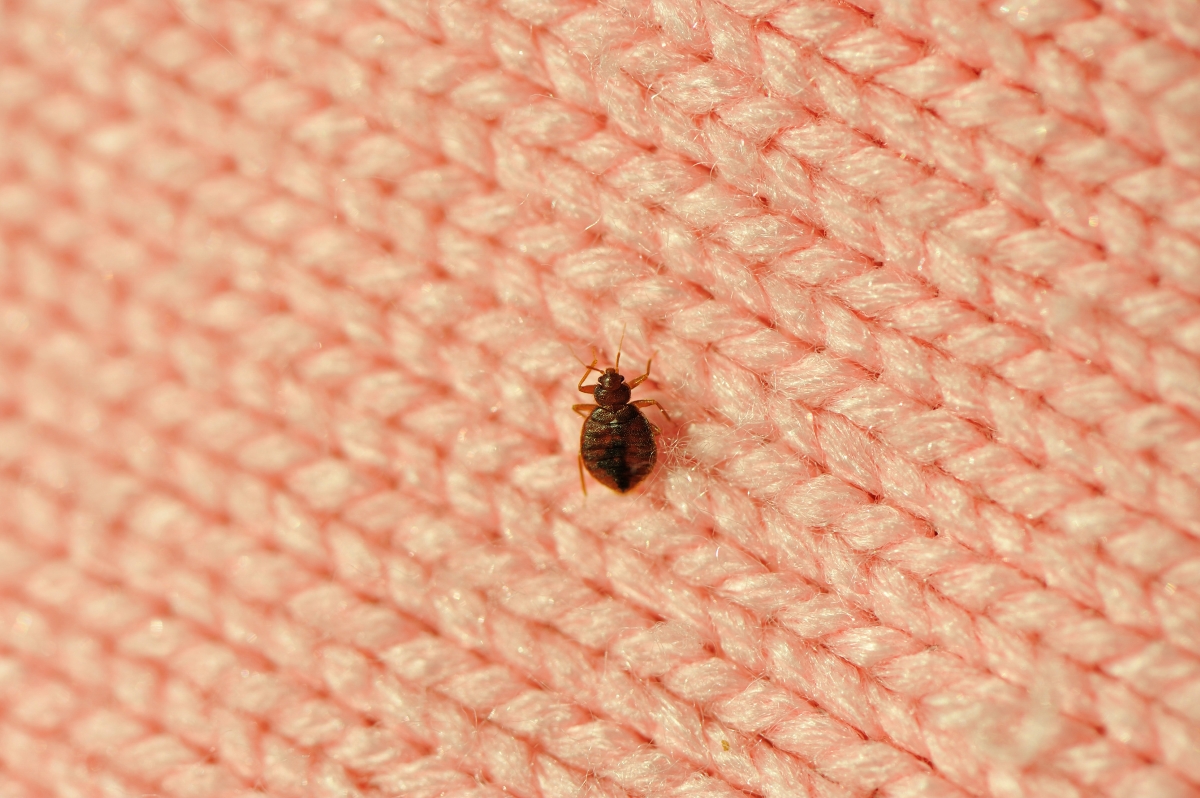
These small, opportunistic bloodsuckers will hitch a ride on pretty much anything, including clothing, suitcases, and car upholstery. Once indoors, bedbugs (Achaearanea tepidariorum) can infest more than just your bed, hiding out in cracks and crevices in baseboards, walls, and electrical outlets. While their bites aren’t fatal, they are itchy and unpleasant, so you definitely want to avoid a full-on bedbug infestation, especially during the holidays, when people tend to travel more and stay in hotels.
Solution: To keep bedbugs out of your house, inspect all mattresses before use. Be on the lookout for dark brown spots on the fabric, which could be bed bug droppings. When you return from a trip, look over your luggage carefully and wash your clothing in hot water. Seek professional pest-control services if you suspect that bedbugs have come to stay.
RELATED: 10 Essential Tips to Avoid Bed Bugs While Traveling
6. Stink Bugs
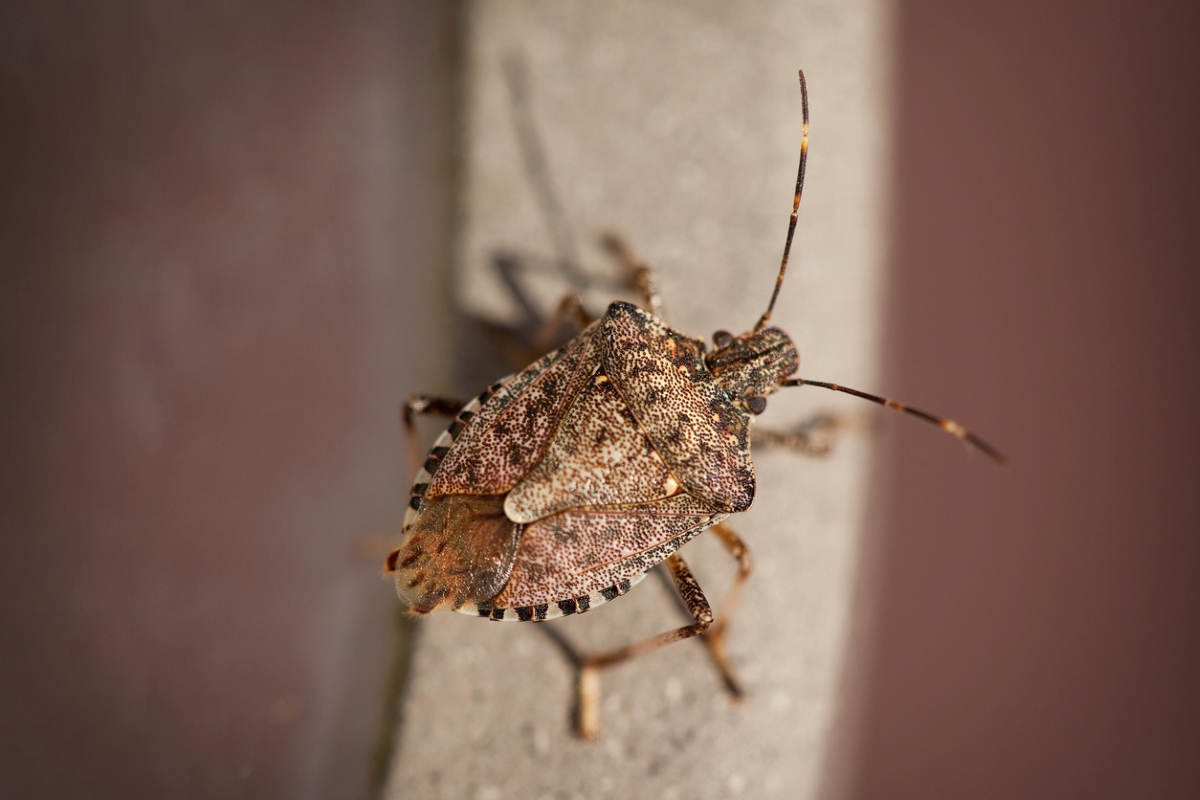
While residents in at least 43 states may be familiar with the brown marmorated stink bug (Halyomorpha halys), so called because of the smelly chemical excretion it produces when threatened, homeowners in the Northeast and Mid-Atlantic regions are most impacted by these swiftly spreading pests. They become active in fall, emerging from their outdoor nests to seek shelter from the cold.
Solution: Keep stink bugs out by sealing every point of entry to your home. Because these critters tend to cling to screens and curtains, pest experts recommend rubbing these surfaces with a strongly scented dryer sheet, which can reduce stink bug presence by up to 80 percent.
7. Boxelder Bugs
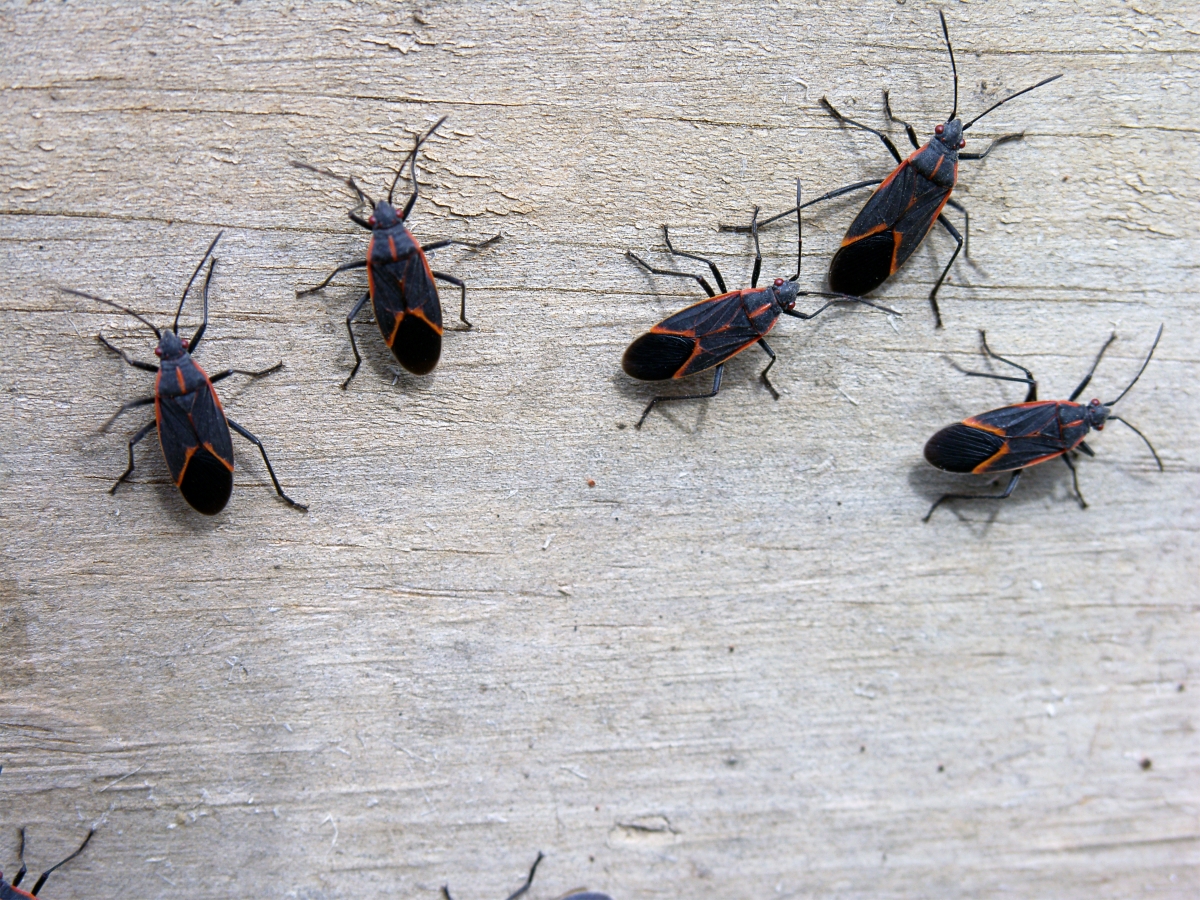
Like stink bugs, boxelder bugs (Boisea trivittata) are harmless to people but produce a pungent odor when disturbed. Dark brown or black with red markings, these insects inhabit certain varieties of trees (box elder as well as maple and ash), but seek warmer nests in winter. They can appear in large numbers both inside and outside your home, so “prevention is key,” according to Chelle Hartzer, an entomologist and Orkin pest expert.
Solution: Spray the exterior of your home with a residual insecticide, a pesticide that remains on a surface for a length of time and kills bugs that crawl over it. Spray around your home in early spring and again in the fall, as these are the most active periods in their life cycle. When applying insecticide, be sure to test a small patch first to make sure the chemical does not damage your house’s siding or paint, and always wear protective gear, including goggles, mask, and gloves.
RELATED: 10 Places You Never Knew Pests Were Hiding
8. Cluster Flies
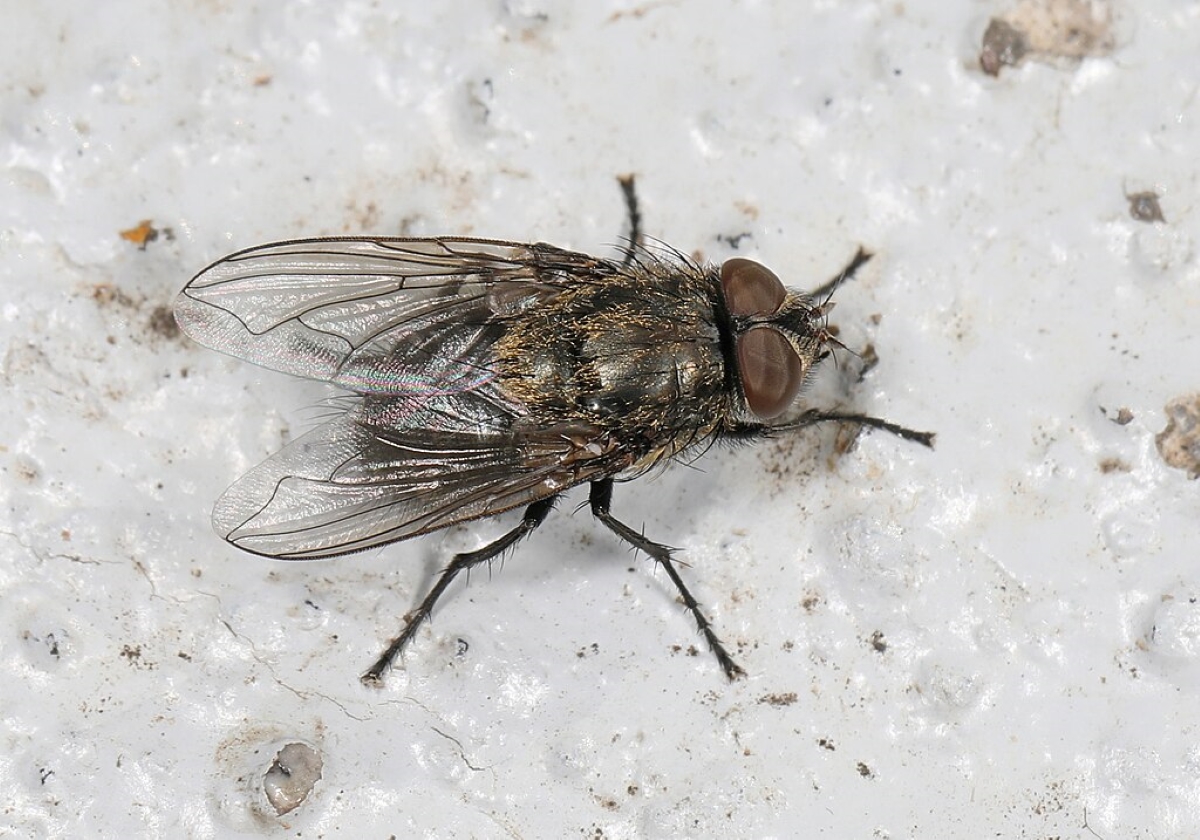
It’s not only bears that hibernate in winter. Cluster flies (Pollenia spp.) do too, seeking warm, dark places, like inside the walls of your home, to sleep away the cold months before reemerging in spring. Also called “attic flies,” they are known disease carriers and are capable of crawling inside the smallest of spaces.
Solution: Prevention is key, so seal every crack you can find. Pay attention to gaps in your home’s siding and roofing tiles as well as joints where the roof meets the walls, and don’t forget about screens and windows. You can also get your home professionally treated for cluster fly infestations.
9. Ladybugs
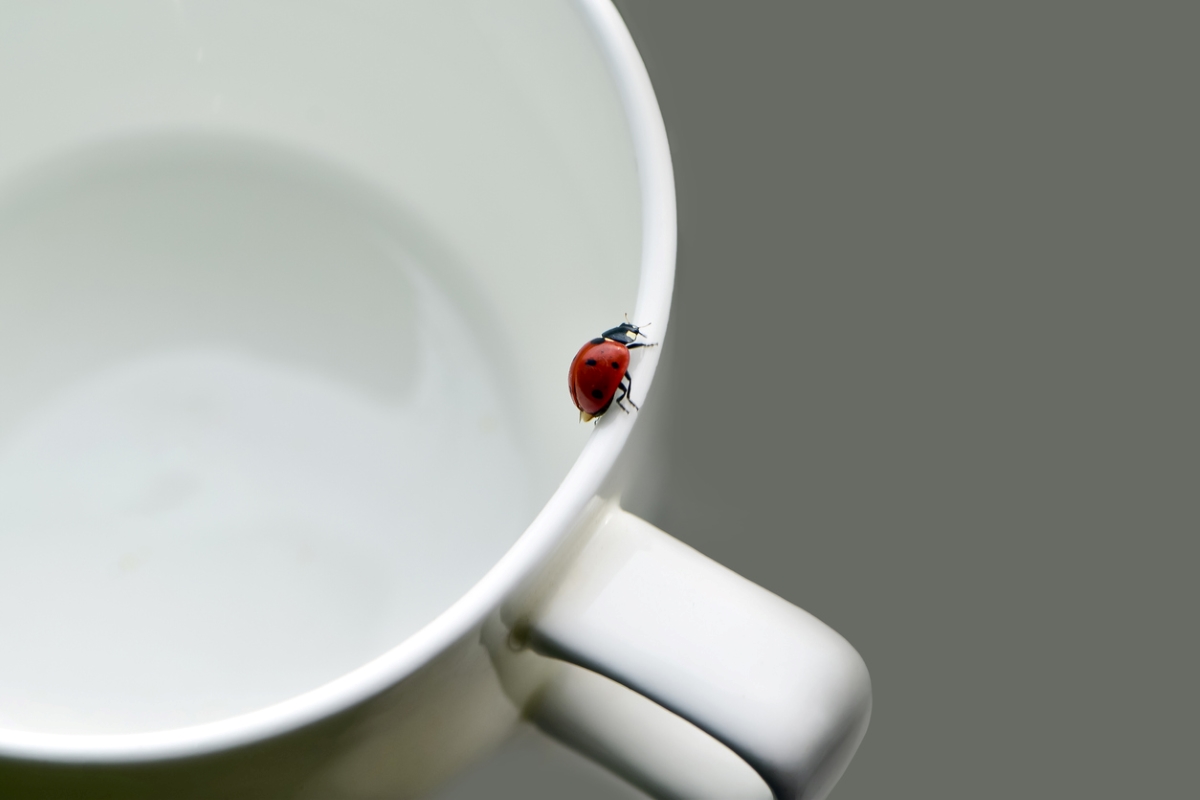
Of all insects, ladybugs (Coccinella septempunctata) may have the most benign reputation—they’re even a symbol of good luck! That said, several species of ladybug, like the spotted lady beetle and Asian lady beetle, seek refuge in our homes over the fall and winter, sometimes in large numbers. Here’s where they might nest:
- Under siding and shingles
- Attics
- Porches
- Garages
- Inside walls
- Window and door frames
Solution: As with most insects, do your best to seal your home thoroughly. Other methods to combat them include diatomaceous earth (which dries out their exoskeletons), cloves and bay leaves (which repel them), and light traps (which attract them to a light source). You can also simply sweep them up and release them. The vacuum works too, but bear in mind that ladybugs can emit a strong smell when crushed. If further intervention is required, you can treat surfaces with a liquid residual pesticide.
RELATED: 3 Good Reasons to Let Ladybugs Live in Your Garden
10. Western Conifer Seed Bugs
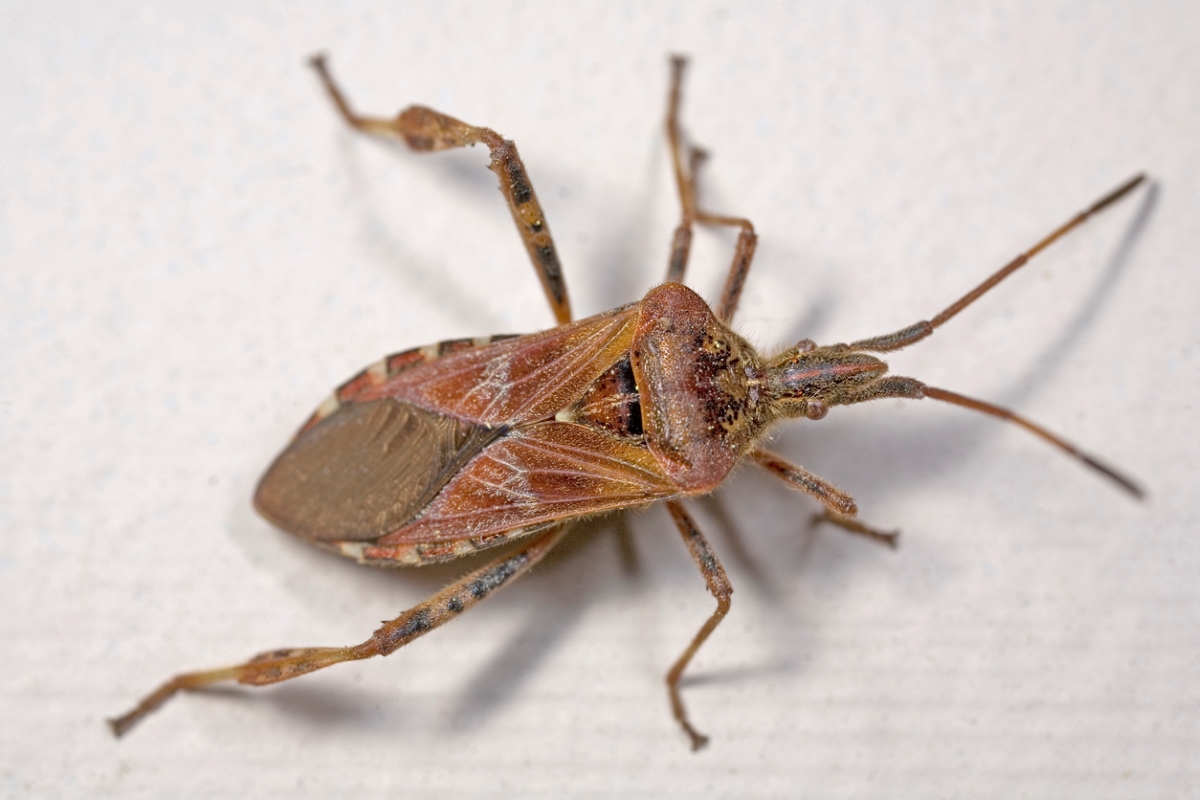
Most of us can appreciate the beauty of Christmas trees. But the bugs that feed off their sap? Not so much. The western conifer seed bug (Leptoglossus occidentalis), one of those sap-sucking insects, is prevalent in the northern United States but has been expanding eastward as a result of climate change. Nearly an inch long and brownish in color, the insect produces a loud buzzing that can cause alarm, especially when a swarm seeks to spend the winter in your home. Though they won’t bite or sting you, they’re nevertheless an unpleasant addition to your living space.
Solution: Western conifer seed bugs are extremely tough to exterminate, even with aggressive methods. Beyond sealing gaps around electrical boxes, sockets, switches, and light fixtures, spray exterior walls with a lasting residual insecticide in late summer or early fall to reduce the likelihood of an infestation.
RELATED: Pests That Might Be Lurking in Your Christmas Tree—and How to Get Rid of Them
11. German Cockroaches
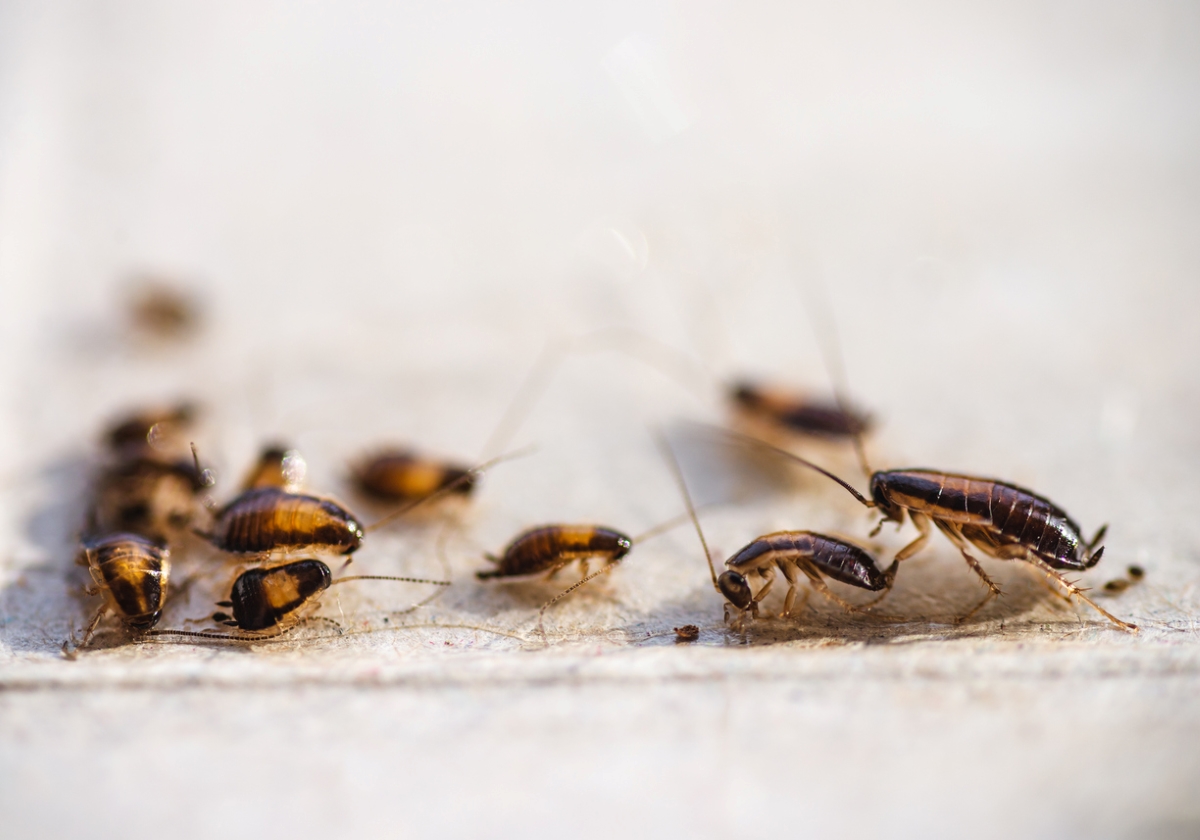
Smaller than their American cousins, German cockroaches (Blattella germanica) are nonetheless every bit as unwelcome. They don’t like cold weather, and will seek shelter in homes when fall rolls around. If you see one German cockroach, you likely have a mess of them somewhere, as they are prolific breeders. They like to live in humid places near food sources—and, as scavengers, they eat pretty much anything.
Solution: Clean countertops and cupboards thoroughly to eliminate food sources; don’t leave dirty dishes in the sink overnight. Sprinkle diatomaceous earth or boric acid in infested areas. You can also try insecticide gel baits.
RELATED: What Are These Bugs That Look Like Cockroaches in My Home?
12. Ants
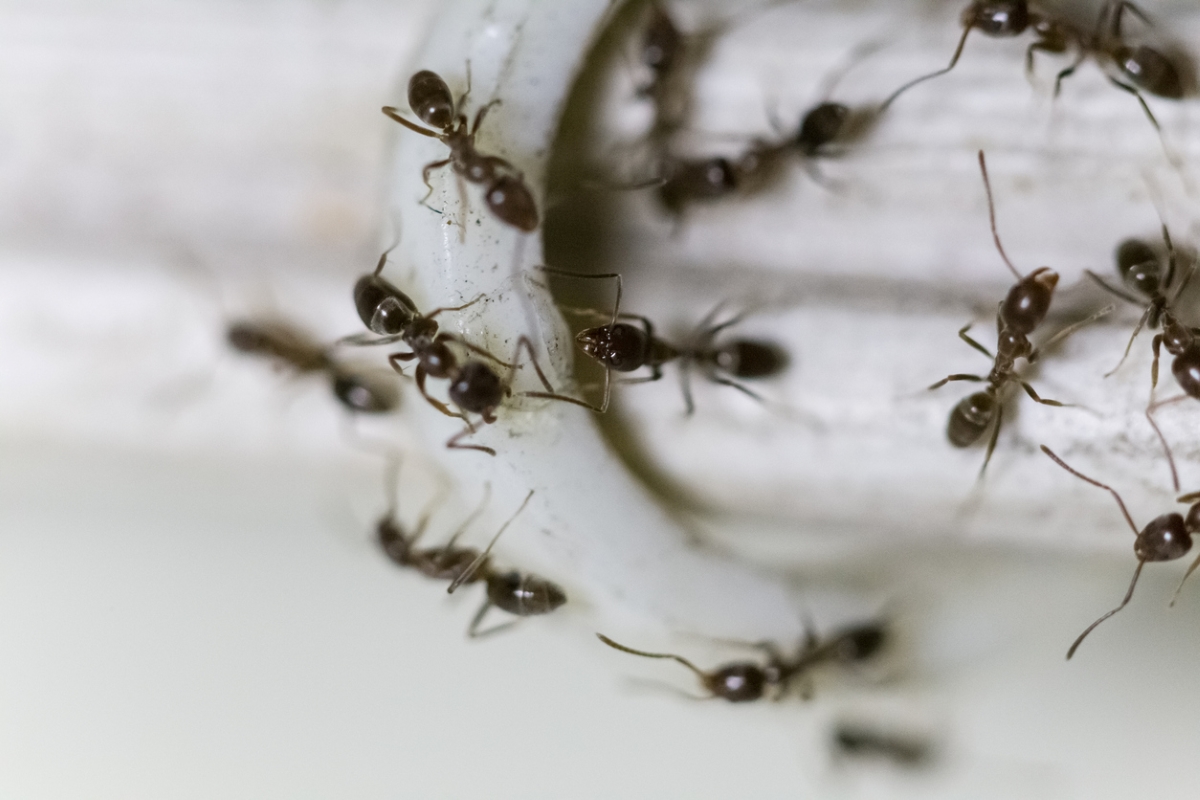
Many ants live underground, and as autumn rains soak the earth, ants (Formicidae) are forced to surface. Furthermore, they don’t like cold weather, which just adds another reason for them to seek refuge in your home. There are nearly 14,000 species of ants, and sometimes it feels like they’re all living with you! The types of ants commonly found in homes include black, fire, carpenter, Argentine, and ghost.
Solution: As with many other insects, the first place to start is by sealing your home. Keep the kitchen tidy, so no food sources are available. Fix leaky faucets to eliminate water sources. Sprinkle diatomaceous earth where you see ants, or try boric acid traps.
RELATED: How to Get Rid of Ants in the Kitchen Once and For All
13. Hairy Fungus Beetles
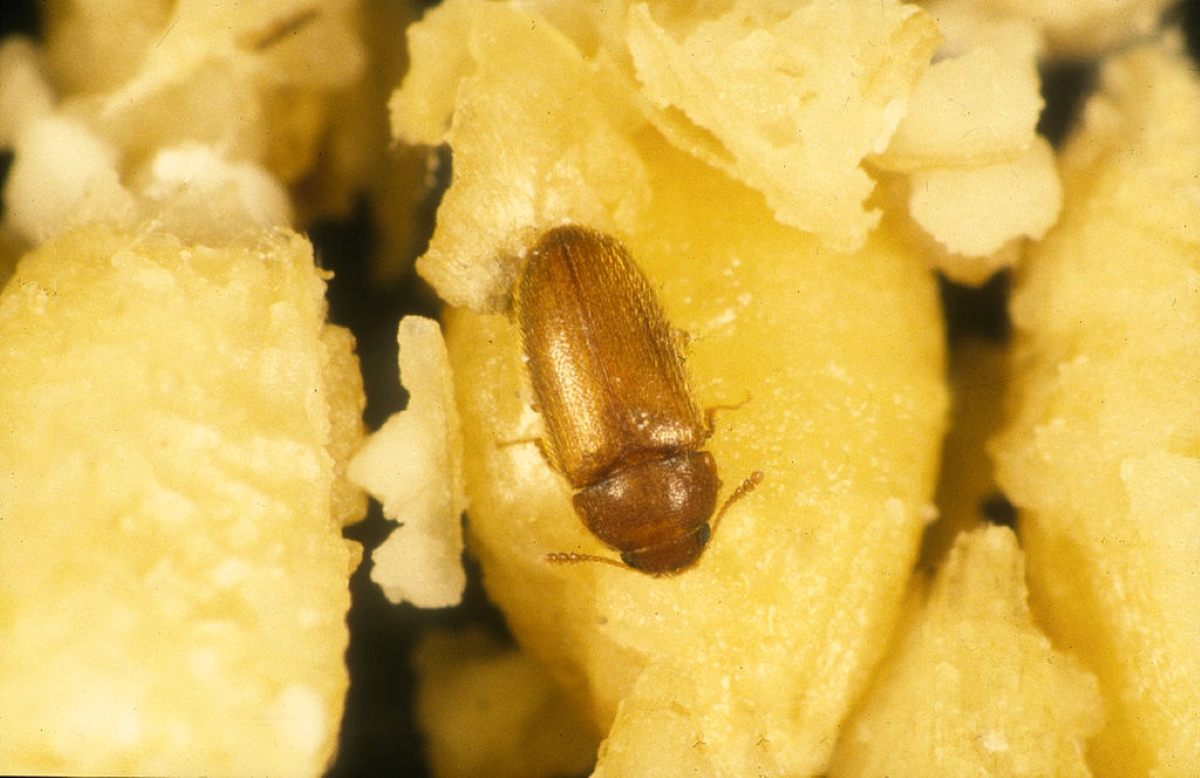
These small pests are more typically found outdoors in places where improperly stored grains are allowed to mold. But hairy fungus beetles (Typhaea stercorea) will occasionally find their way into homes, particularly if grains or cereals are stored in damp conditions. While they don’t bite, sting or spread human diseases, they are absolutely an unwelcome nuisance.
Solution: The best treatment for fungus beetles is prevention.
- Make sure your food storage areas are always clean and dry.
- If you see mold or mildew on wood or other surfaces, bring in fans to dry them and eliminate the source of the moisture.
- You may have to use a household fungicide to kill the fungus.
- If you live in a humid area, you might need to use a dehumidifier.
- Store dry foods in tightly sealed containers.
To get rid of an overwhelming infestation, first toss out affected grains and then seek help for a comprehensive treatment.
RELATED: 23 Things in Your House That Are Attracting Bugs and Rodents
When is it time to call a pro?
If you’ve tried home remedies to no avail, it might be time to contact one of the best pest control companies, like Orkin or Terminix, to help you deal with your bug problems. If you see structural or any type of damage to your home, smell noxious odors, see just way too many bugs or experience recurring incidences of infestations—it’s time for help.
